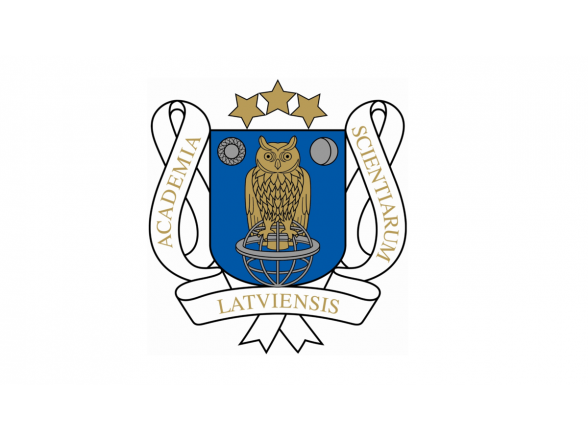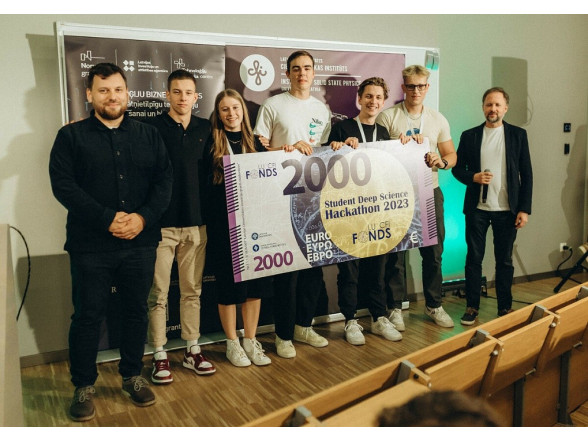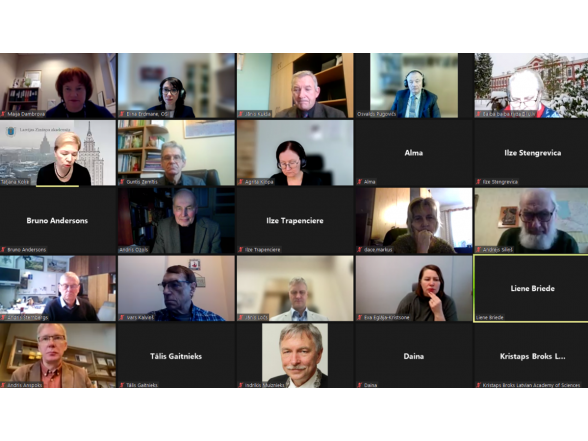The Latvian Academy of Sciences (LAS) has named the most significant achievements in Latvian science in 2020. This year, LAS experts evaluated 41 applications submitted for the competition. The President of the Latvian Academy of Sciences Ivars Kalviņš emphasized: “The LAS is satisfied with the outstanding performance of Latvian scientists in 2020 and expresses its gratitude to the participants of the competition and is convinced that despite the Covid-19 pandemic, 2021 will be a year of further growth in Latvian science and research.” LAS explained that after a thorough evaluation of the submitted works by LAS experts, its Presidium selected and named the 11 best works, which were awarded the title of the best achievement in science of the year. Taking into account the fact that ten submitted works, which were not among the laureates, were also high-quality research, the LAS Presidium decided to mark these achievements with the LAS President’s Letter of Recognition.
Among the most significant achievements in Latvian science in 2020, LAS marked 3 researches, which were performed by scientists at the ISSP UL together with the colleagues from other institutions – one of them received the title Best achievement in science of the year and two were awarded the LAS President’s Letter of Recognition. The most valuable asset of the ISSP UL are, of course, people working at the institute and devoting their professional life to research. CAMART² has played an invaluable role in improving the performance and possibilities for them to thrive in the fields of research they are passionate about as well as opening up opportunities for actively making use of the scientific network provided within the project.
One of the most important researches in theoretical science is "In-depth understanding of the functional properties of modern materials under extreme radiation conditions and their prediction", in which scientists from our institute, Institute of Physics University of Tartu (Estonia) - Dr. A. Popov, Dr. habil.phys. V. Kuzovkov, LAS full member J. Kotomin, Dr. D. Grjaznov, A. Platonenko, PhD E. Shablonin, LAS foreign member A. Luscik.
The industrial progress of 21st century could greatly benefit from development and exploitation of fusion reactors producing environmentally clean friendly electrical energy. One of a key problem here is need in new advanced materials able to operate under extreme conditions (high temperatures and intensive neutron radiation). Search for such optical and dielectric materials is an essential part of EUROfusion-Latvia association activities. In the series of joint studies of the Institute of Solid State Physics, University of Latvia, Riga and Institute of Physics at the University of Tartu, Estonia, radiation damage of perspective functional materials was studied under neutron and heavy ion irradiation. The optical and dielectric, as well as vibrational and magnetic properties of radiation defects in numerous oxide crystals, nanomaterials and ceramics were carefully studied and compared. Based on this study, we developed new theoretical methods able to evaluate and predict advanced materials functionality and radiation damage evolution under extreme reactor conditions.
Among the winners of the LAS President’s Letter of Commendation is the research "New 0ptical and mathematical methods to improve image quality" done by the scientists of the ISSP UL - Dr. phys. Varis Karitans, Dr. phys. Sergejs Fomins, Dr.habil.phys. Maris Ozolins, Mg. Katrina Laganovska and Mg. Karlis Kundzins.
Research is focused on improving the quality of images through the use of deformable mirrors. Optical distortions must first be assessed in order to improve image quality. Optical distortions are assessed using light intensity measurements, and such studies are becoming increasingly popular in optics, materials science, and other fields of science. The optical system used in these studies is simple, and the algorithms used in them analyze the data obtained with low-cost imaging cameras that distinguish a small number of intensity levels. Historically, the implementation of the first algorithms required much more complex and expensive cameras. This method can be used in various image quality improvement technologies, in improving the optical quality and visual perception of the eye, in bio-optics and in the analysis of material structure. An additional advantage of the method is its applicability under low-light conditions.
The LAS Letter of Recognition has also been awarded to the research “New synthetic methods in purine chemistry and their application in materials science”, which was elaborated by scientists - Irina Novosjolova, Dr.chem. Kaspars Traskovskis, Mg.chem. Armands Sebris, Mg.chem. Janis Mikelis Zakis, Mg.chem. Kristers Ozols, Mg.chem. Dace Cirule, Bc.chem. Andris Jeminejs, Mg.phys. Natalija Tetervenoka, Dr.phys. Anatoly Mishnev, Dr.chem. Erika Bizdena, Dr.phys. Aivars Vembris, LAS full member Valdis Kokars and LAS full member Maris Turks representing ISSP UL, RTU Faculty of Materials Science and Applied Chemistry and Latvian Institute of Organic Synthesis.
Purine derivatives are known to be important therapeutic agents and have recently emerged also in materials science. The development of novel synthetic methods for substitution of purine system provides access to hitherto unknown derivatives that will allow medical chemists and materials scientists to design new types of molecules and their applications. Azido group was used as a regioselectivity switch and novel purine ring substitution reactions were developed. This allowed reversing the traditional purine substitution style and forming C-N and C-S bonds. The use of 1,2,3-triazoles as leaving groups in purine SNAr reactions has also been discovered and new C-C, C-N, CO and C-P bond formation reactions were developed. The developed methodology is general and can be applied also for synthetic modifications of quinazolines and other heterocycles used in medicinal chemistry. The new purine derivatives have strong luminescent properties and they have been used to develop new metal ion sensors and organic light emitting diodes.
https://labsoflatvia.com/aktuali/nozimigakie-sasniegumi-teoretiskaja-zinatne
https://www.tvnet.lv/7143935/zinatnu-akademija-apbalvojusi-11-si-gada-zinatnes-sasniegumus



